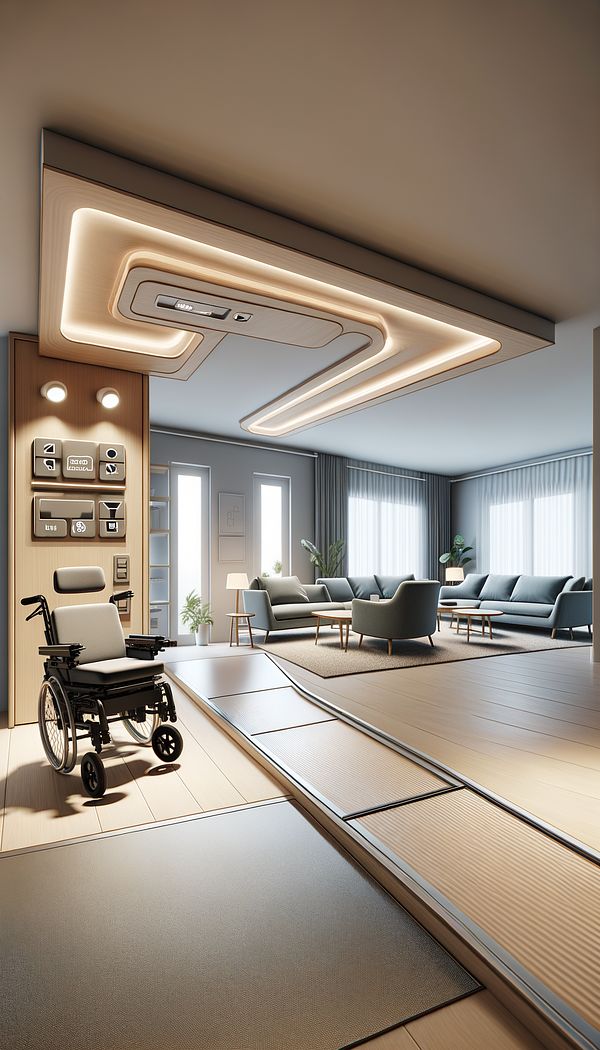What is Accessible Design?
Accessible design is an approach to creating spaces that are usable by people with a wide range of abilities.
Description
Accessible design, at its core, refers to the creation of environments and products that are accessible to all people, including those with disabilities. This approach to interior design emphasizes the importance of making spaces usable and functional for everyone, regardless of physical, sensory, or cognitive limitations. It encompasses a wide range of considerations, from entryways and door widths to room layouts and lighting fixtures, ensuring that every element of the design contributes to an accessible environment.
Implementing accessible design often involves adherence to specific standards and guidelines, such as those outlined in the Americans with Disabilities Act (ADA) in the United States. These guidelines cover everything from the height of counters and the use of Braille signage to the installation of grab bars in bathrooms and the provision of adequate maneuvering space for wheelchair users. Accessible design is not only about meeting legal requirements but also about fostering inclusivity, offering dignity and independence to all individuals.
The concept of universal design closely aligns with accessible design. Universal design refers to the design of products and environments that are usable by all people to the greatest extent possible, without the need for adaptation or specialized design. While accessible design focuses on accommodations for disabilities, universal design promotes usability for everyone.
By incorporating principles of accessibility and universal design, interior designers create spaces that not only comply with regulations but also enhance the quality of life for a diverse population. This holistic approach ensures that interior environments are welcoming and accommodating to everyone, reflecting a commitment to equality and inclusivity.
Usage
Examples of accessible design in practice include the use of ramps instead of stairs at building entrances, the incorporation of adjustable-height counters in kitchens and bathrooms, and the inclusion of ample circulation space in rooms and hallways. Accessible design also involves the thoughtful placement of controls and switches at reachable heights for individuals in wheelchairs, as well as the selection of door handles that are easy to operate for people with limited hand strength.
FAQs
-
What is the difference between accessible design and universal design?
Accessible design focuses specifically on making spaces usable for people with disabilities, while universal design aims to create environments and products that are usable by everyone to the greatest extent possible, without the need for adaptation.
-
Why is accessible design important in interior design?
It ensures that interior spaces are inclusive and usable for everyone, including people with disabilities. This approach promotes equality, dignity, and independence, aligning with legal requirements and ethical considerations.
-
How do you implement accessible design in interior spaces?
Implementation involves adhering to certain guidelines and standards, like the Americans with Disabilities Act (ADA), considering various elements such as entryways, room layouts, lighting, and fixtures to ensure they contribute to an accessible environment.
Practical Application
When applying accessible design principles, consider the specific needs of potential users, including those with visual, hearing, mobility, and cognitive impairments. Start by familiarizing yourself with relevant legislation and guidelines. Incorporate features like ramps, wide doorways, and accessible restroom facilities. Use contrasting colors and textures for better visibility and employ tactile and audible indicators where necessary. By considering these factors, you create spaces that are not only compliant with the law but also provide a seamless and independent user experience for everyone.
-
Lighting111 articles
-
Decorative Techniques322 articles
-
Space Planning & Layout134 articles
-
Accessibility & Ergonomics30 articles
-
Sustainability & Eco-Friendly Design69 articles
-
LambrequinA lambrequin is a kind of decorative drapery or wood paneling that extends down the sides of a window or arch, often used in conjunction with curtains or blinds.
-
BaroqueBaroque is a highly decorative and theatrical style of architecture, art, and design that originated in the early 17th century in Europe.
-
Gallery WallA gallery wall is a curated display of photographs, artwork, or objects on a wall.
-
Hand DistressingHand distressing is a decorative technique used to give new furniture or materials an aged or weathered appearance.
-
Worm HolesWorm holes are small, round holes created by wood-boring insects, often giving wood a distressed, aged appearance.
